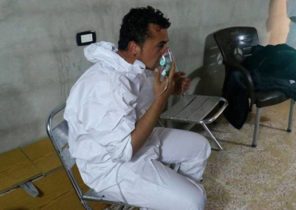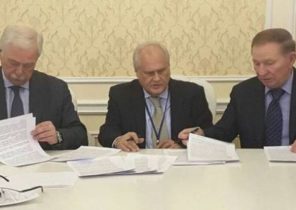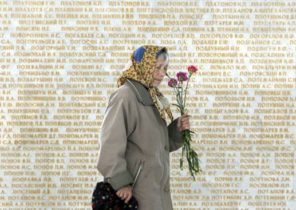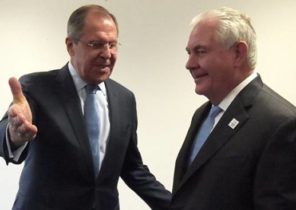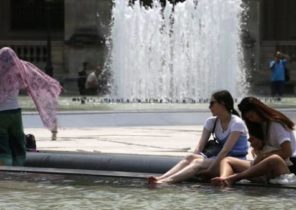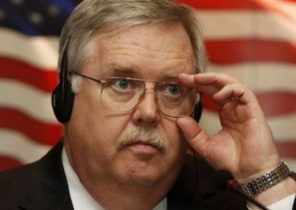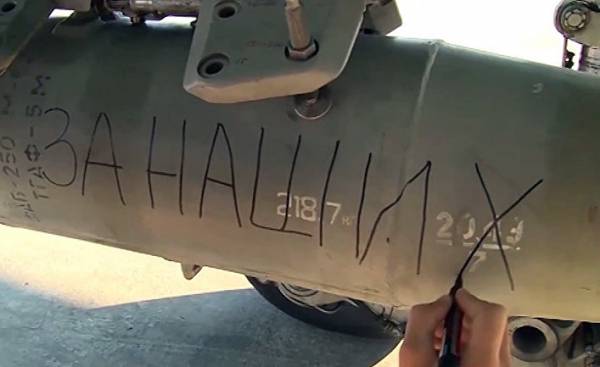
Lecturer in the Department of political science and international relations, University of Istanbul Sehir, associate Professor Vugar, Eminbeyli (Vügar Imanbeyli) assesses the situation in Syria in light of recent events.
By the end of may this year, the operation in raqqa carried out against ISIL (banned in Russia — approx. ed.) together, the U.S. and the people’s protection Units (YPG) in Syria, activitives and created in the region a new situation. 30 may Russia hit the columns of ISIS militants, a move from Rakka to Palmyra, launching guided missiles “Caliber” with a range of 300 kilometers from the ship “Admiral Essen” and the submarine “Krasnodar”, located in the Eastern part of the Mediterranean sea. This activity indicates a new position of Moscow? To understand this, it would be useful to draw attention to the “flexible policy” that Russia sells to Syria. Under this policy means that Russia, if necessary, uses this front different tools (military or political-diplomatic) and even, if necessary, revises its policies.
As you know, Moscow is providing diplomatic and military support for the Assad regime in Syria, from September 2015 was directly involved in the fighting. When the President of Russia Vladimir Putin landed Russian troops in Syria, it may have been made to achieve at least the following four tactical goals: 1) to save a very weakened its longtime ally — the Assad regime — the final collapse; 2) in the case of the fall of the regime to create in the region a small state with access to the Mediterranean sea, dependent on Russia militarily; 3) more effective regional player in the middle East; 4) with an eye on domestic policy — to support his rhetoric about Ukraine and Crimea thesis on “combating international terrorism” in Syria and to consolidate his power by maintaining a climate of military mobilization. The strategic goal that stands above these tactical objectives could be to destroy the isolation policy applied by the USA and the EU since the occupation of Crimea in 2014, with the game on larger scale. After this policy of isolation, supported economic and diplomatic sanctions, have hampered the development of Russia and its potential as a great power, damage its prestige at the international level. Otherwise it would be to take military risks, and to support the weakened government of the country, which is as close to Russia as Ukraine is not a close threat, is not even part of the Slavic Christian world and does not have any strong ties with Russia except for the regional Alliance?
At the moment, it seems that Russia has achieved the above objectives except the last. First, she saved the Assad regime from destruction. Second, even if Russia’s military intervention failed to halt the collapse of the regime, Moscow thanks to the two military bases that she reinforced (Tartus and Hamim), have guaranteed the creation of small dependent States in the Eastern Mediterranean. Thirdly, thanks to Syria, Russia has become an integral player on the regional policy. Fourth, while within Russia the operation in Syria is not earned such interest and support as interference in Crimea and Eastern Ukraine, the fight against international terrorism has given the opportunity to influence on the internal situation; in addition, the rattling of Russian weapons in foreign countries has strengthened the nationalist-Patriotic feelings and in a sense helped to divert attention from socio-economic difficulties. Finally, despite the fact that the policy of isolation and sanctions against Russia have so far failed to put an end to, it is possible to observe that the United States is in the region managed to achieve tactical “consensus” in certain areas (for example, in the case of Managem).
Surprisingly, Russia has achieved these results by using military force in such amount, which was insignificant. According to information that until now was reflected in the press, in the Eastern Mediterranean around the naval base of Tartus runs about ten Russian ships, and on the base Hamim posted about 20 aircraft, 20 to 30 helicopters and special forces numbering four or five thousand. Although from September 2015 Moscow twice announced the withdrawal of a certain number of these military units from Syria, it becomes clear that she carries out rotation of forces and equipment. In this regard, we can say that Russia has given more military in the ranks of his army the opportunity to gain military experience and skills, and even experienced a new armed the system in real conditions of war. Moreover, patrolling the streets in some cities, such as Aleppo, was charged with the military-police connection Chechens-Muslims. At the same time, we know that some Russian mercenary soldiers were mobilized by one private company to conduct combat actions on the side of Assad. While it is not known exactly how many Russian soldiers were killed in Syria due to the current ban on the publication of information on military casualties. Thus, in the internal public opinion was also created the image that participation in the war in Syria is happening at a low cost.
The search for a solution in Syria
Its military advantage on the battlefield in Syria, Russia has tried to move on the diplomatic field. Moscow believes that, despite the military support, the Assad regime will not be able to take the whole country under its control, and the Syrian question cannot be resolved by military means. Therefore, from the end of 2016, along with regional players like Turkey, she managed to first ensure a ceasefire on the battlefield, and then begin a new diplomatic process, known as “Astana.” As you know, from January 2016, the parties met three times in Astana under the authority of Russia, Turkey and Iran. In these negotiations, Moscow tabled a prepared draft Constitution of Syria. With the proposal of this project on the agenda was raised the idea of a Federal Syria. At this time, attempts were made to provide an even greater split of the Syrian opposition, the appearance subordinate of Russia or close to it groups (in the Russian press they are referred to as group “Moscow” and “Hamim”), as well as the invitation of these groups to the talks in Geneva. Therefore, in recent talks in Geneva last March, the Syrian opposition has taken part in four separate groups. Moreover, Moscow even though she is on the side of the Assad regime, has intensified such Kurdish armed groups in Northern Syria, as the Party “Democratic Union” (PYD) / people’s protection Units (YPG), and, when needed, trying to make these groups part of its regional policy. For example, in February 2017, she gathered these groups at a conference in Moscow.
When the United States launched a missile strike on Assad’s forces in Syria following the chemical attack in April of 2017 and gave the signal that they are more effective in Syria and unable to go anywhere, Russia has demonstrated a different response. Moscow, which earlier insisted that the thesis about safe areas can be a step to the disintegration of the country in the beginning of may, hurried to reach agreement with Turkey and Iran on the establishment of “zones of de-escalation”. Thus, the real situation on the battlefield is confirmed by the section on the four “zones of de-escalation”.
At the end of may, after the ISIS militants, who fled from Raqqa since the beginning of operation in this city, rushed towards Palmyra, the Russian military sent its missiles and aircraft in these groups. This was done in order to Palmyra, which is located at the intersection of roads in many regions, the third time fell into the hands of ISIS, because of geopolitical importance and symbolic value of this city. By this operation, Russia has shown that its military elements, it also keeps ready.
But the main question is what Russia will do after the operation in raqqa and continue his “flexible policy.” Although at the tactical level this policy has given some results and can continue its, apparently, is not enough to achieve the above strategic goals. EU every six months to extend sanctions against Russia, and in the administration of the trump in the US, there are different points of view. Obviously, trump, who is in search of a strategic agreement with Russia, under pressure from their voters and “establishment”, while impossible to predict how he will act in the future. In addition, Russian public opinion is also already entering an election period. I wonder whether the Russian leadership, which is largely secured their space for maneuver at the regional level using a small military force to make more radical moves for a few months before the presidential election in March 2018?
